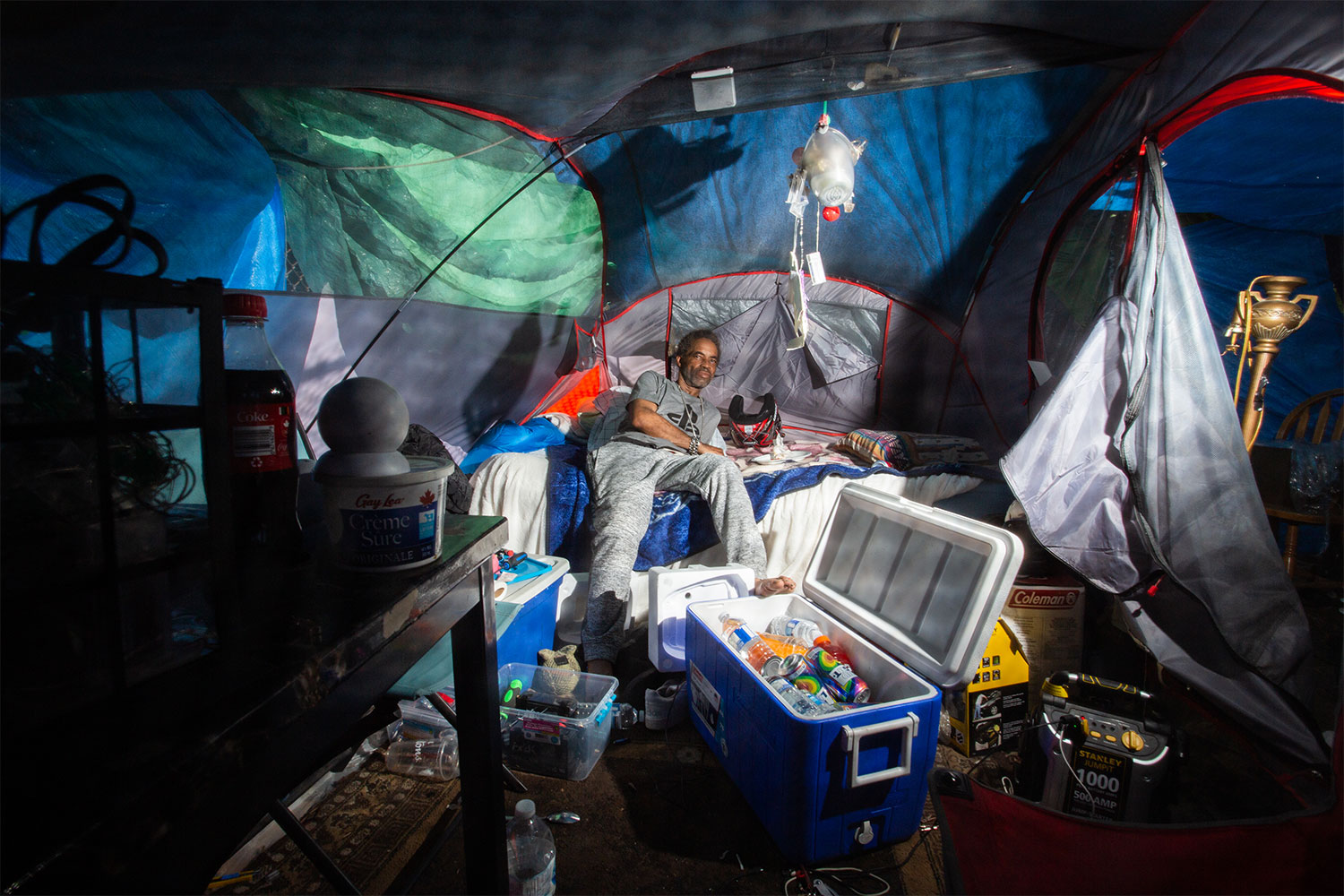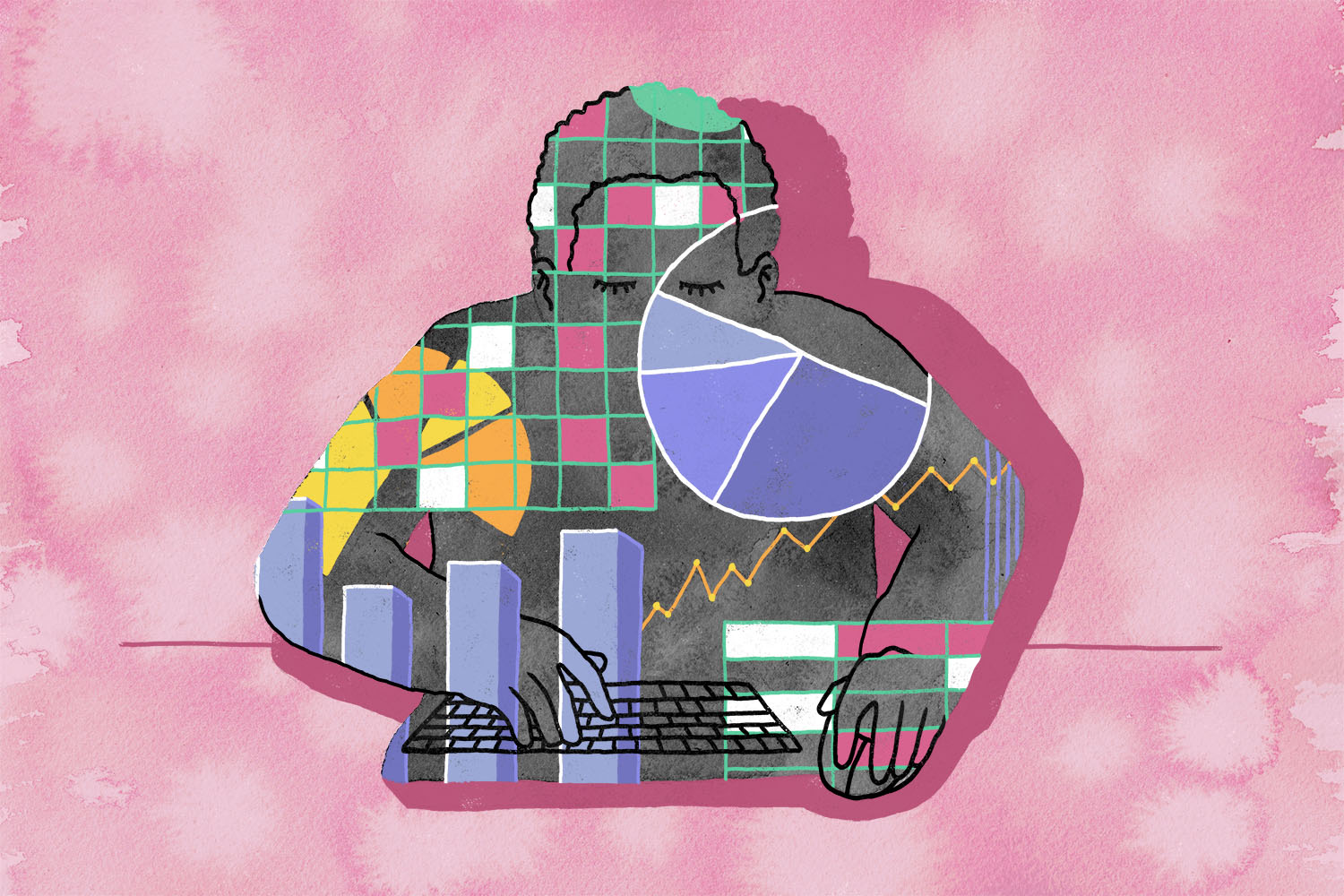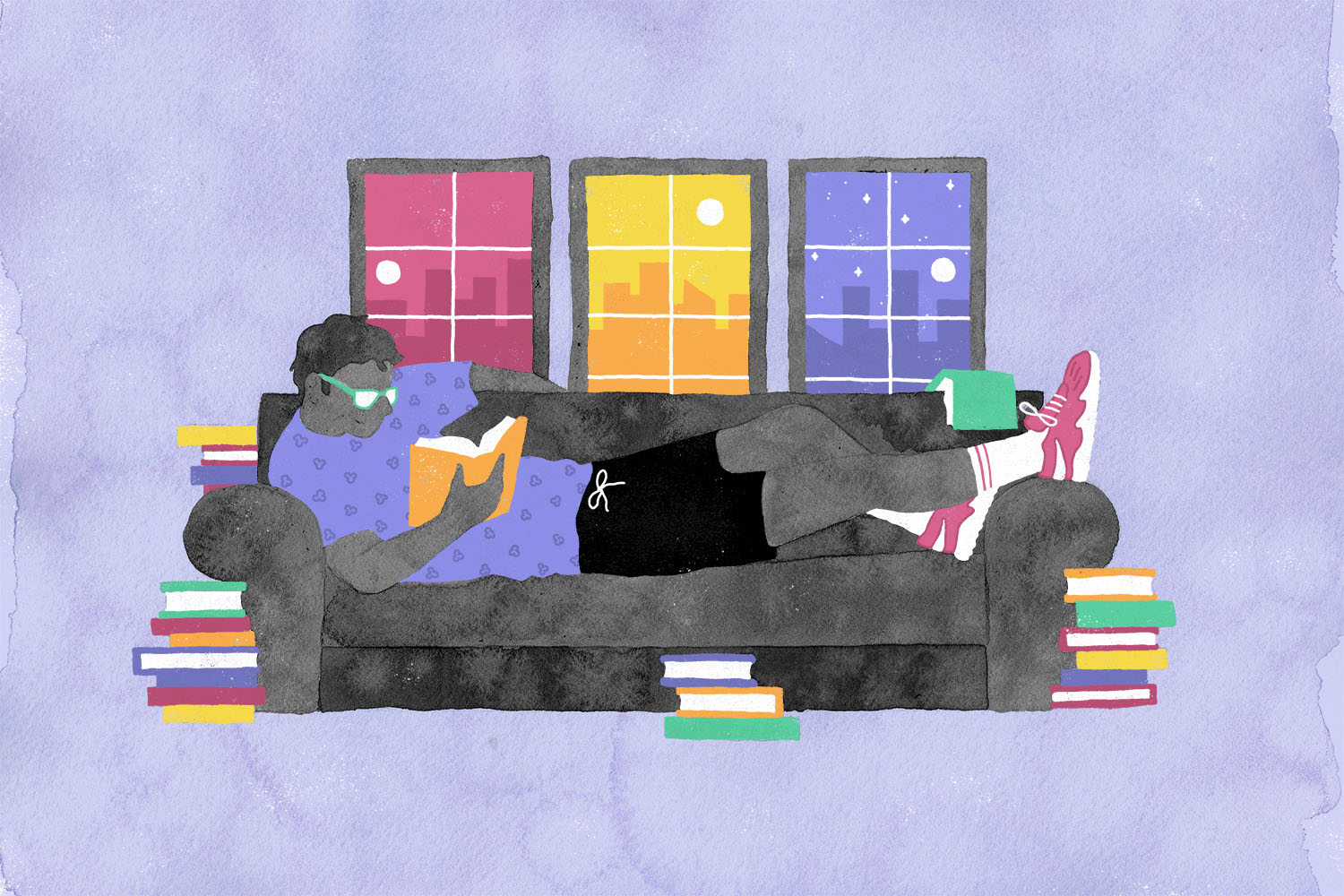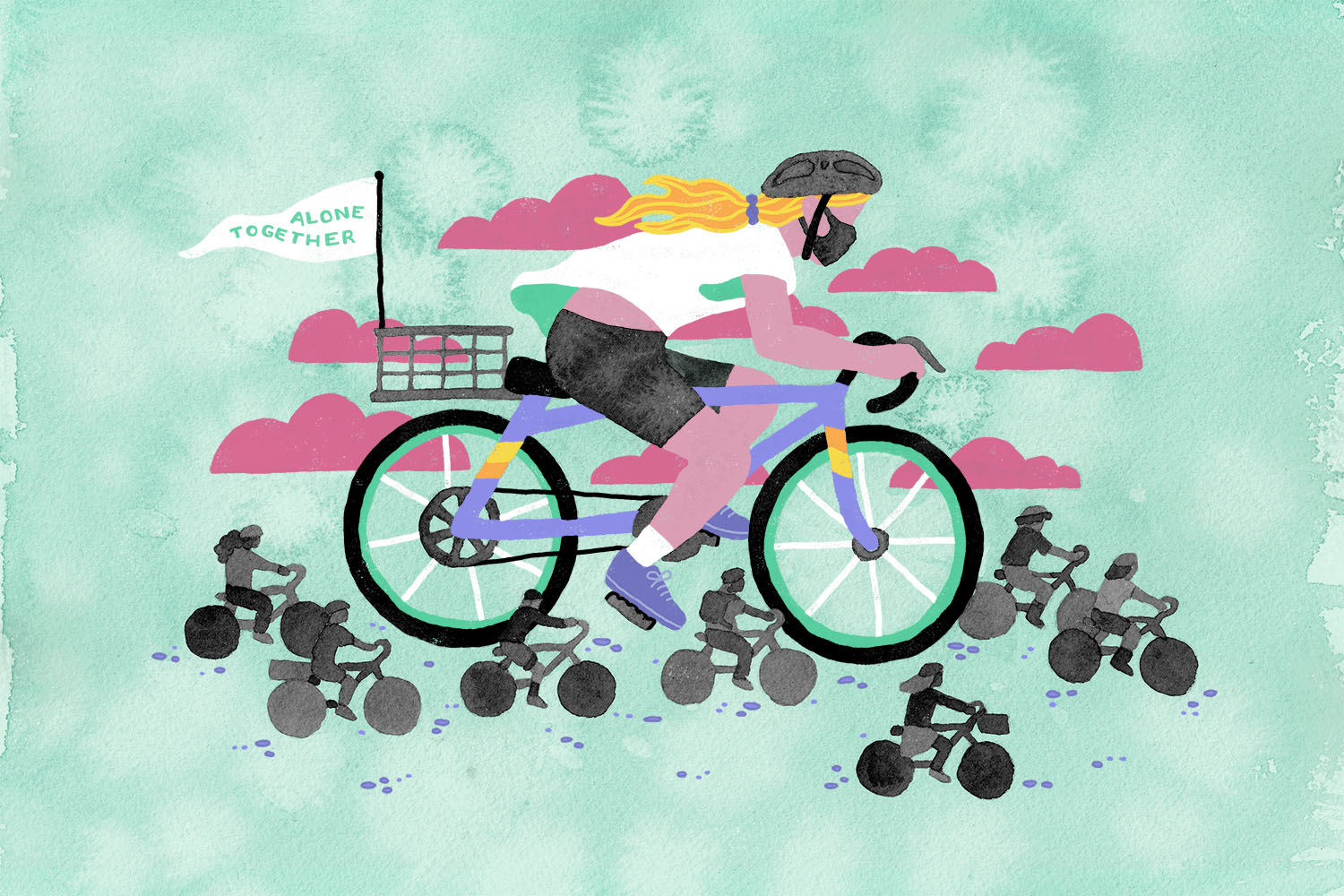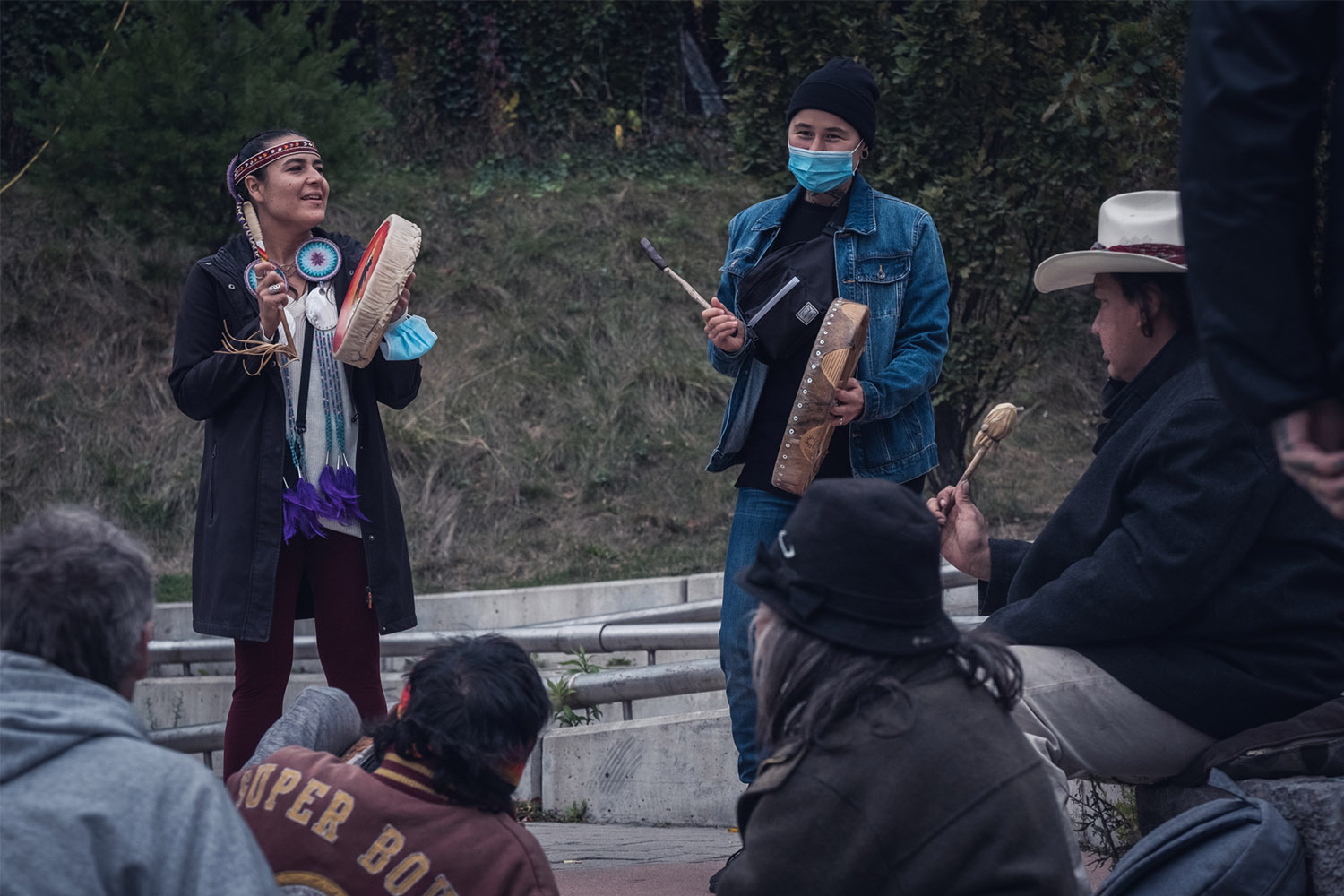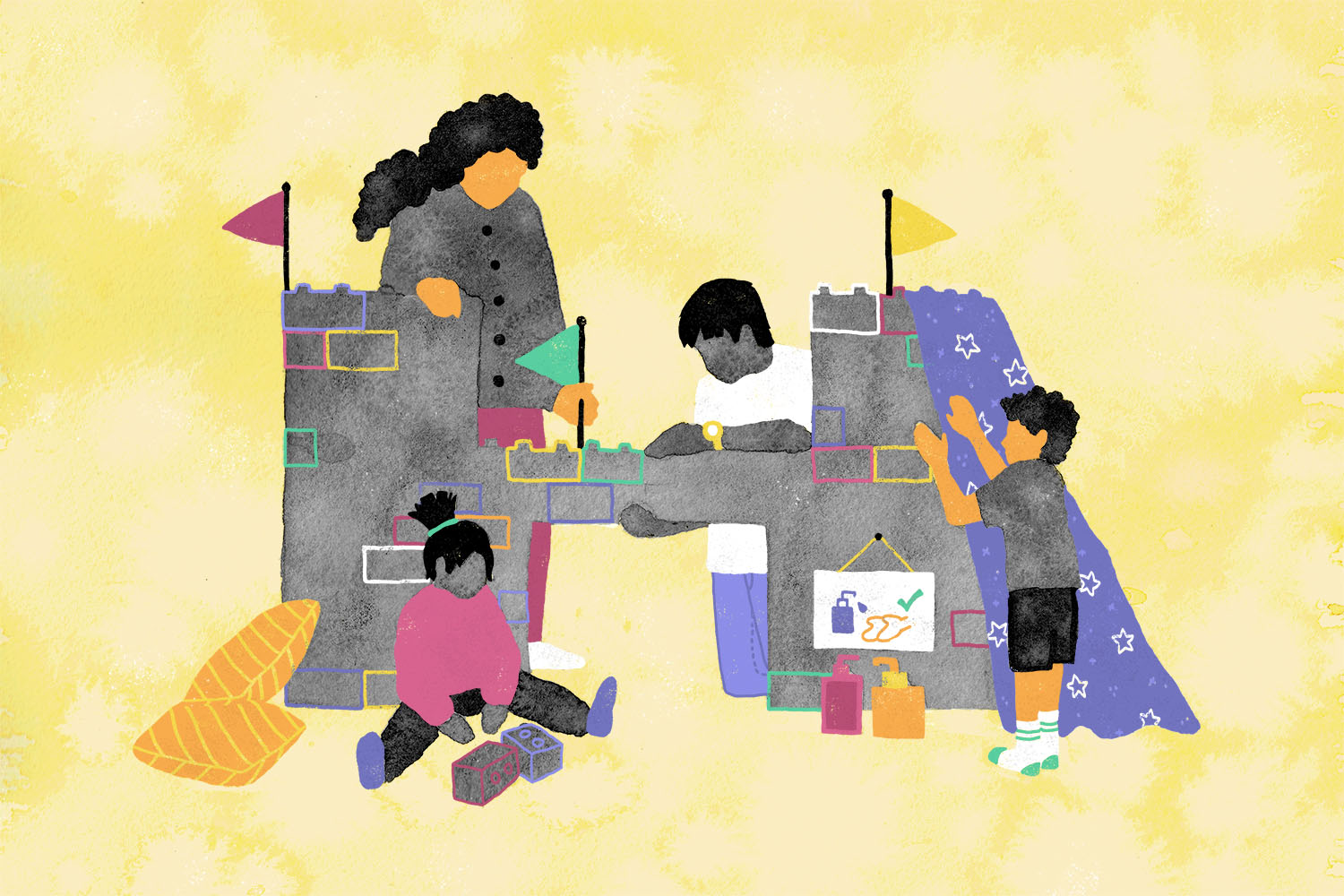
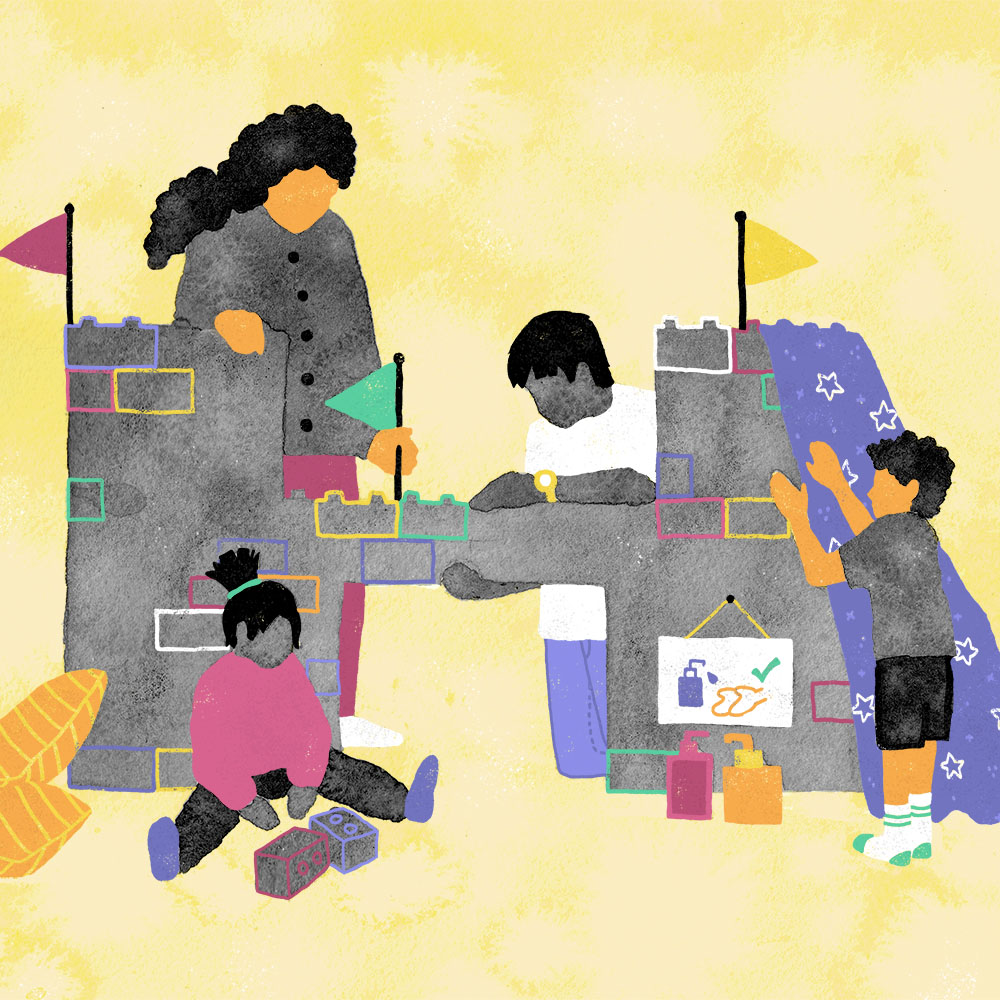
A year ago, when the pandemic had just begun, the world began to feel like the set of a Black Mirror episode. The church sign that normally had a pleasant psalm on it now read “closed for COVID-19”; the joggers started running right down the middle of the street so they didn’t breathe on anyone; the playgrounds we used to go to every day were covered in yellow caution tape. Every time I went out, I was relieved to get home to my two young kids. I was thankful they were little enough that they wouldn’t miss too much while daycares and schools were closed. And I assumed that our house would become a haven from the weirdness, and that it would be nice— in a way— to spend all day ensconced in the kids’ innocent world when reality suddenly felt so scary.
But the fears around the coronavirus did leak into our house, mostly through dystopian play. My preschooler started acting out catastrophes, like volcanos erupting and earthquakes. My job was to post caution signs around the house while he manned an imaginary loudspeaker. “WARNING, WARNING,” he would announce. “We’re at level four! Everyone needs to stay inside.” Every time I changed my toddler’s diaper, she insisted that we stick clean wipes to our faces so we could “play masks.”
One day, my Lego-loving son made a joint fortress for Lego Batman and Lego Ironman to share, explaining that they had decided to bubble together so they could still play with each other. When I posted a picture of the Iron-Bat cave on Facebook, a friend took a screenshot to show her kid, who had been building little villages of Lego houses and putting one character in each, explaining that they weren’t allowed to go out and play anymore.
I found this all profoundly upsetting. I had hoped, naively, that my kids wouldn’t really think too much about what was happening and would somehow process this as a surprise summer holiday of sorts—a nice time when they got to skip school and be home with mom.
This wasn’t just the normal stress of not wanting to go to daycare in the morning or asking to quit soccer—things I had a framework for, things I remembered doing myself. What was it like for them to face a pandemic, to leave school one day, thinking everything was normal, and never go back? To worry about everyone getting sick? Were they going to be traumatized by this? Was this kind of play proof that was happening already?
All this time, my kids have been shrinking the big problems in their lives down to the size of little Lego figures, so they can figure them out.
It’s common for grown-ups to be upset when kids play out their problems, says Theresa Fraser, a psychotherapist and the president of The Canadian Association for Play Therapy. That’s especially true if it’s about a trauma that we’re still processing ourselves. “It can be scary,” she says. She heard from some teachers who were concerned, for example, after the kids in their class started playing “coronavirus tag” at recess. “You’re dead!” they would yell, after touching someone.
But it’s natural for kids to use pretend play to process the things that are bothering them. “Kids will want to play funeral, or play being isolated, because that’s reality. It’s new information that they’re working out,” she explains. (If they’re showing other signs of anxiety, or their play becomes repetitive and focused on a trauma, she suggests reaching out for more help.)
When my kids added the coronavirus into playtime, I mostly tried to shift us towards more cheerful plotlines, for my own mental health, if nothing else. We made magic protective potions out of dish soap and hand sanitizer. I would pretend to be a Playmobil character who was really good at looking on the bright side. “I’m sorry you can’t come over,” I would squeak, while walking the little figure across the dining room table. “We can go race at the park though! That’s still pretty fun!”
A year later, we no longer even have pretend play dates; I think they’ve been pretty much forgotten. The kids have also given up their semi-regular pastimes of playing grocery store, theatre, field trip and museum—all of which seem to be too far in the past to draw from now.
But we are still playing pandemic. We now play about the mundane aspects of our COVID 19-infused lives. My daughter’s favourite game is playing school, but the main step seems to be to get all our placemats out of the drawer and put them on the ground, spaced far apart, so everyone knows where to sit. She loves to play library, but it’s just a shelf that I hand piles of books through, since our local branch has switched to curbside pickup for the past few months.
And after a year of pandemic make-believe, I realize I may have been looking at this wrong the whole time. I had been imagining this play was a symptom of distress in my kids. But I’m now seeing it more as their safe space. “When parents join in [this kind of play], it’s a beautiful opportunity for connection, and it’s also an opportunity to process this together,” Fraser says. Parents playing along with these ideas can feel therapeutic to children, she adds —like someone is bearing witness to their worries. All this time, my kids have been shrinking the big problems in their lives down to the size of little Lego figures, so they can figure them out.
I know how lucky we are that we’re all able to stay at home, and that no one we know has been seriously ill from the coronavirus—that my kids are playing lockdown, not hospital. Plus, their ideas are undeniably adorable. When they pretend to open a store one day, they use a calculator as the cash register and put our largest bottle of hand sanitizer beside it, shouting “PLEASE use the hand sanitizer before you shop!” at me as I approach.
“Of course!” I say, laughing. I grab an easter basket to shop with, and the play goes on.


